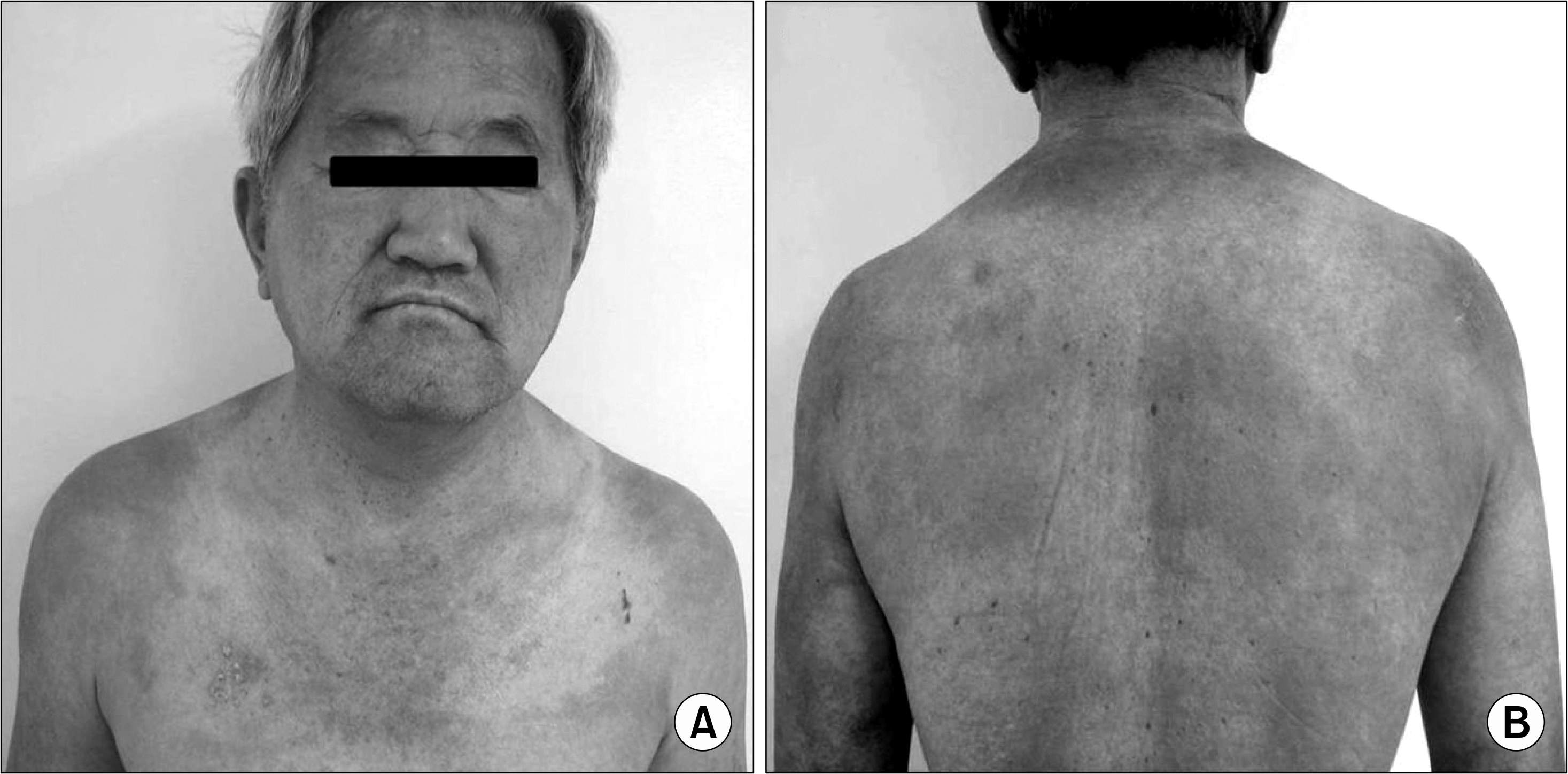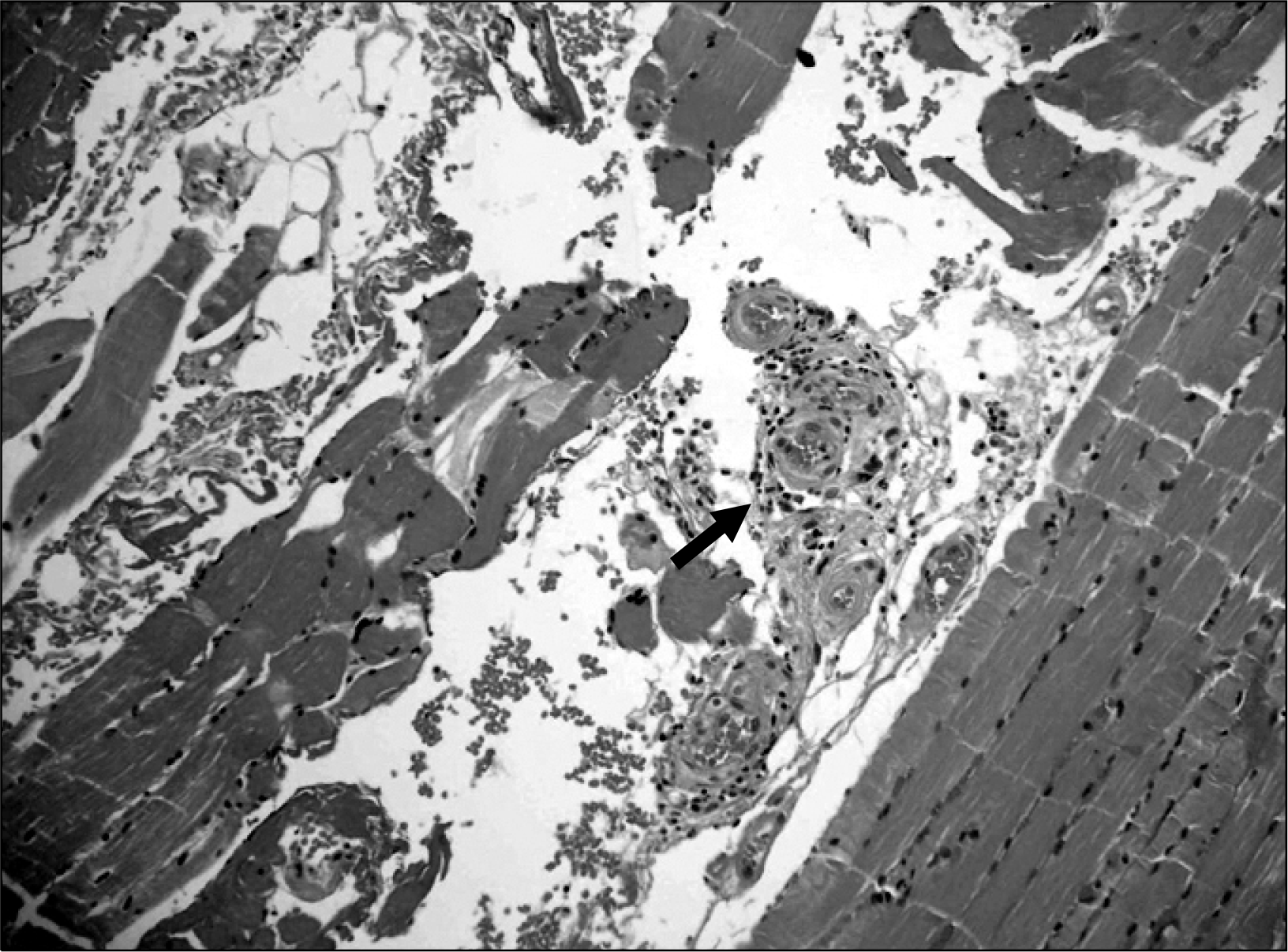Abstract
Dermatomyositis is an idiopathic inflammatory myopathy with characteristic cutaneous lesions and progressive symmetric proximal muscle weakness. An association between dermatomyositis and malignancy has long been reported on. A 73 year-old male patient with had biopsy-proven prostate cancer presented with typical skin lesions and proximal muscle weakness. On the laboratory findings, the muscle enzymes were prominently elevated. EMG and muscle biopsy showed typical findings that were consistent with dermatomyositis. The patient was successfully treated with systemic steroid, intravenous immunoglobulin and methotrexate. In Korea, dermatomyositis is frequently complicated by stomach, lung and breast cancers. To the best of our knowledge, this is the first Korean report of dermatomyositis accompanied by prostate cancer. Here, we describe the case of dermatomyositis with prostate cancer and we briefly review the relevant literatures.
References
3. Kim SM, Choi YH, Nam TS, Pai HJ, Oh MD, Chung MH, et al. A clinical analysis of 100 patients with dermatomyositis-polymyositis. Korean J Intern Med. 1990; 39:812–23.
4. Hill CL, Zhang Y, Sigurgeirsson B, Pukkala E, Mellemkjaer L, Airio A, et al. Frequency of specific cancer types in dermatomyositis and polymyositis: a population-based study. Lancet. 2001; 357:96–100.

5. Kang MC, Park YD, Lee KS, Chung SL. Two cases of dermatomyositis associated with malignant tumor. Korean J Dermatol. 2008; 46:1069–74.
6. Stone O. Dermatomyositis/polymyositis associated with internal malignancy: a consequence of how neoplasm alter generalized extracellular matrix in the host. Med Hypothesis. 1993; 41:48–51.
7. Bernard P, Bonnetblance J. Dermatomyositis and malignancy. J Invest Dermatol. 1993; 100:128S–32S.

8. Curtis A, Blaylock H, Harrell E. Malignant lesion associated with dermatomyositis. J Am Med Assoc. 1952; 150:844–6.
9. Rapport AH, Omenn GS. Dermatomyositis and malignant effusions: rare manifestations of carcinoma of the prostate. J Urol. 1968; 100:183–7.
10. Kellogg DR, Talley RW. Concurrent dermatomyositis and metastatic breast carcinoma: case report. Henry Ford Hosp Med J. 1966; 14:405–9.
11. Iorizzo LJ, Jorizzo JL. The treatment and prognosis of dermatomyositis: an updated review. J Am Acad Dermatol. 2008; 59:99–112.

12. Sunnenberg TD, Kitchens CS. Dermatomyositis associated with malignant melanoma: parallel occurrence, remission, and relapse of the two processes in a patient. Cancer. 1983; 51:2157–8.

13. Masuda H, Urushibara M, Kihara K. Successful treatment of dermatomyositis associated with adenocarcinoma of the prostate after radical prostatectomy. J Urol. 2003; 169:1084.





 PDF
PDF ePub
ePub Citation
Citation Print
Print




 XML Download
XML Download